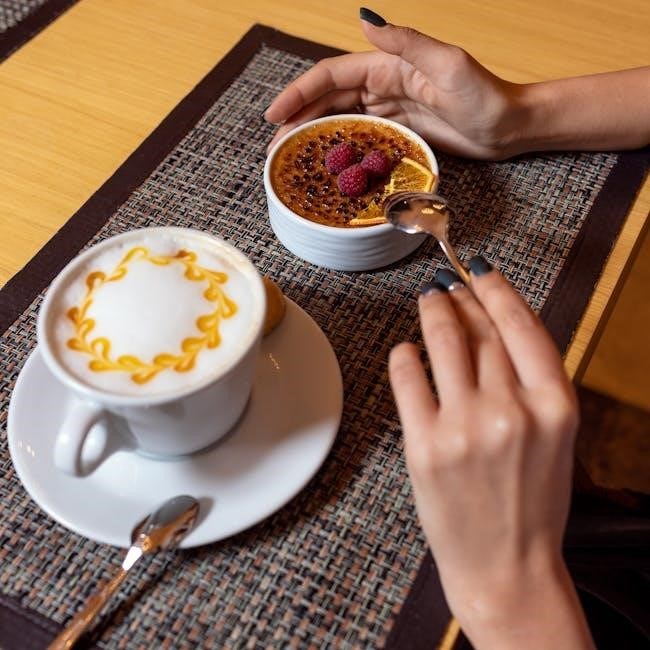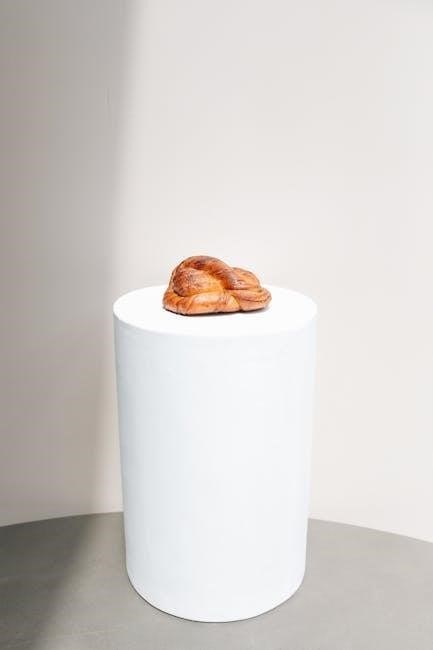
playboy sugar and spice pdf
The 1976 Playboy publication, Sugar and Spice, stands as a provocative exploration of femininity and sexuality, blending sensuality with cultural commentary, sparking debates on its controversial content.
Background of “Sugar and Spice” Publication
Sugar and Spice, a 1976 Playboy Press hardcover, features works by Helmut Newton, Jeanloup Sieff, and others. It includes sensuous images blending eroticism with art. Notably, Garry Gross’s photos of Brooke Shields, then 10, sparked controversy. Archived at the University of Florida, this collection reflects 1970s socio-cultural dynamics and remains a significant yet contentious piece in erotic photography history today.
Purpose and Scope of the Article
This article delves into the cultural and artistic significance of Sugar and Spice, examining its role in 1970s erotic photography and its broader societal impact. By analyzing the work of photographers like Helmut Newton and Garry Gross, the article explores how the publication balanced artistic expression with controversy. It also addresses the ethical debates surrounding its content, particularly images of Brooke Shields, while contextualizing its influence on modern perceptions of femininity and sexuality. The scope includes historical context, artistic contributions, and ongoing discussions about its legacy and relevance today.

Significance of the “Sugar and Spice” Collection
The Sugar and Spice collection holds profound cultural and artistic significance, offering a lens into 1970s societal norms and erotic art. Featuring works by Helmut Newton and Jeanloup Sieff, it captures the era’s evolving perceptions of femininity and sexuality. The publication’s controversial content, including images of Brooke Shields, ignited debates on ethics and artistic freedom. Its historical importance lies in its challenge to traditional norms, making it a pivotal piece in the history of erotic photography and a subject of continued discussion in modern times, reflecting its enduring influence and relevance.

Historical Context
Sugar and Spice, released in 1976, reflects the cultural shifts of the 1970s, a decade marked by sexual liberation and evolving perceptions of femininity and eroticism, sparking widespread debate.
The 1970s and the Rise of Playboy Magazine
The 1970s marked a pivotal era for Playboy, as it solidified its status as a cultural icon. Founded by Hugh Hefner in 1953, the magazine reached new heights in the 1970s, blending erotic imagery with intellectual content. Its centerfolds became a hallmark of the sexual revolution, while its interviews with notable figures and coverage of politics, culture, and lifestyle expanded its influence. This period saw Playboy evolve into a symbol of liberation and modernity, setting the stage for controversial yet groundbreaking publications like Sugar and Spice, which reflected the era’s shifting attitudes toward sexuality and femininity.
Cultural and Social Significance of the Era
The 1970s were a transformative period, marked by the sexual revolution and shifting gender roles. Sugar and Spice emerged within this context, capturing the zeitgeist of a society grappling with liberation and identity. The publication became a lightning rod for discussions on femininity, sexuality, and media’s role in shaping perceptions. While celebrated for its artistic sensuality, it also faced criticism for its portrayal of women, reflecting broader societal tensions. The era’s cultural and social shifts laid the groundwork for both the acclaim and controversy surrounding publications like Sugar and Spice.

Evolution of Erotic Photography in the 1970s
The 1970s marked a pivotal era for erotic photography, with Sugar and Spice showcasing a blend of artistic expression and sensuality. Photographers like Helmut Newton and Jeanloup Sieff pushed boundaries, introducing bold, provocative styles that redefined erotic imagery. Their work emphasized storytelling, lighting, and composition, elevating erotic photography to an art form. The publication highlighted a shift toward more liberated and experimental approaches, reflecting the decade’s cultural openness. However, it also sparked debates about objectification and artistic intent, making it a controversial yet influential milestone in the evolution of erotic photography.
Content Overview
Sugar and Spice features a curated collection of nude photographs by renowned photographers, blending artistic sensuality with provocative themes, exploring femininity, and showcasing diverse photographic styles and cultural narratives.
Structure and Organization of the Publication

Sugar and Spice is meticulously structured, presenting portfolios from 13 photographers, each with introductory texts. The publication begins with a thematic overview, followed by individual sections dedicated to each artist’s work, ensuring a seamless transition between diverse styles and narratives. This organization not only highlights the uniqueness of each photographer’s approach but also creates a cohesive experience, allowing readers to appreciate both the collective and individual artistic visions that define the collection.
Key Features and Highlights
Sugar and Spice showcases iconic imagery from 13 renowned photographers, including Helmut Newton and Jeanloup Sieff. A standout feature is Garry Gross’s provocative photograph of a young Brooke Shields, which sparked significant attention. The publication blends sensuality with artistic expression, offering a diverse range of styles and themes. Its controversial content, particularly the depiction of adolescent subjects, has become a focal point of discussion. The mix of elegance and edginess, along with its historical significance, makes it a compelling and thought-provoking collection that continues to captivate audiences and inspire debates about art, ethics, and culture.
Artistic and Aesthetic Elements
Sugar and Spice captivates with its blend of artistic brilliance and provocative imagery. The publication features diverse photographic styles, from Helmut Newton’s bold, empowering compositions to Jeanloup Sieff’s delicate, intimate portrayals. Garry Gross’s work, including his iconic images of Brooke Shields, adds a layer of controversy and debate. The aesthetic elements range from elegant, high-fashion setups to raw, unfiltered captures, creating a visual narrative that explores themes of femininity and sensuality. This fusion of artistry and eroticism has cemented the collection’s place as a landmark in photographic history, blending beauty with boldness in every frame.

Photographers Involved
The Playboy Sugar and Spice publication features works by renowned photographers such as Helmut Newton, Jeanloup Sieff, Garry Gross, and Guido Mangold, each bringing their unique artistic vision.
Helmut Newton and His Contributions
Helmut Newton, a pioneering photographer, contributed strikingly provocative images to Sugar and Spice, known for his avant-garde style. His work often featured empowered women, challenging traditional norms of femininity. Newton’s ability to blend sensuality with high-fashion aesthetics made his contributions stand out. His photography in the publication showcased his signature blend of sophistication and eroticism, leaving a lasting impact on both the magazine and the era’s visual culture. Newton’s involvement elevated the collection’s artistic credibility, cementing his legacy as a master of contemporary photography.
Jeanloup Sieff and His Unique Style
Jeanloup Sieff brought a distinctive elegance to Sugar and Spice with his refined, artistic approach. Known for his poetic and intimate style, Sieff’s photography emphasized natural beauty and subtle sensuality. His work often featured soft lighting and minimalistic compositions, creating a sense of quiet allure. Sieff’s contributions to the publication highlighted his ability to capture the essence of femininity with grace and sophistication, making his images timeless and memorable. His unique style added depth and diversity to the collection, showcasing his artistic vision and technical mastery.
Garry Gross and His Work in “Sugar and Spice”
Garry Gross’s contributions to Sugar and Spice were marked by his suggestive and evocative imagery. Known for pushing boundaries, Gross’s photography often explored themes of youth and sensuality. His work in the publication included controversial images, such as those featuring a young Brooke Shields, which sparked significant debate. Gross’s style blended artistic expression with provocative content, making his portfolio a focal point of discussion. His involvement in the collection underscored the broader cultural and ethical questions surrounding the project, leaving a lasting impact on its reputation and legacy.
Guido Mangold and His Photographic Approach
Guido Mangold brought a distinctive style to Sugar and Spice, characterized by meticulous attention to detail and a blend of elegance with sensuality; His photographs often featured carefully composed settings, emphasizing both the artistic and erotic elements of his subjects. Mangold’s use of lighting and composition created a sense of intimacy and sophistication, setting his work apart. His approach reflected a deep understanding of femininity, capturing the essence of the women he photographed with grace and nuance. Mangold’s contributions to the collection highlighted his ability to balance artistic expression with the provocative nature of the publication.
Cultural Impact
Sugar and Spice redefined norms of femininity and sexuality, challenging societal expectations and inspiring future media. Its provocative content sparked debates, leaving a lasting legacy in modern erotica and culture.
Influence on Modern Erotica and Fashion
Sugar and Spice has profoundly influenced modern erotica and fashion, inspiring photographers and designers with its bold aesthetic. The publication’s provocative imagery, captured by legends like Helmut Newton and Jeanloup Sieff, redefined sensuality and elegance. Its controversial content, including Garry Gross’s photographs of Brooke Shields, sparked debates about art, ethics, and boundaries. Despite backlash, the collection remains a benchmark for erotic photography, shaping contemporary styles and encouraging artists to push creative limits. Its legacy continues to inspire, blending high fashion with intimate allure in a way that resonates with modern audiences. The publication’s impact endures, even as cultural attitudes evolve.
Changing Perceptions of Femininity and Sexuality
Sugar and Spice challenged traditional notions of femininity, presenting women as confident, sensual, and empowered. Its imagery, often provocative, sparked debates about female objectification versus liberation. The publication’s portrayal of women as both delicate and powerful redefined societal expectations, blending elegance with eroticism. However, criticisms arose, particularly regarding the inclusion of underage models, which raised ethical concerns about exploitation. The collection remains a focal point in discussions about gender representation, highlighting the tension between artistic expression and cultural sensitivity in depicting femininity and sexuality. Its influence continues to shape modern interpretations of these complex themes.
Role of Media in Shaping Public Perception
Sugar and Spice exemplifies how media influences societal views on gender and sexuality. By showcasing women in both sensual and powerful roles, it challenged stereotypes while reinforcing others. The publication’s widespread reach and controversial content sparked public debates, highlighting media’s dual role in reflecting and shaping cultural norms. Critics argue that such portrayals, while empowering to some, objectified women for others. The collection underscores the power of visual media in shaping perceptions, illustrating both its potential to inspire change and its risk of perpetuating harmful narratives about gender and identity.
Legacy of “Sugar and Spice”
Sugar and Spice remains a landmark in erotic photography, its controversial yet artistic approach ensuring continued relevance and sparking ongoing discussions about its cultural significance.
Enduring Popularity and Relevance
Sugar and Spice continues to captivate audiences due to its blend of artistic photography and cultural significance. The publication’s provocative imagery, featuring works by Helmut Newton and Jeanloup Sieff, remains iconic. Its exploration of femininity and sexuality resonates with contemporary discussions, ensuring its relevance. The mix of sensuality and high-fashion aesthetics has influenced modern media and fashion, solidifying its legacy; Despite controversies, the collection is celebrated for its historical value and artistic merit, making it a sought-after piece among collectors and scholars alike.
Collectible Value and Historical Importance
Sugar and Spice is a highly sought-after collectible, prized for its historical significance and artistic contributions. The publication features works by renowned photographers like Helmut Newton, enhancing its value. Its controversial content and cultural impact make it a key artifact of the 1970s. Rare copies, especially in good condition, command high prices among collectors. The book serves as a time capsule of the era’s shifting attitudes toward sexuality and feminism, offering insights into the evolution of erotic photography and its role in shaping modern media.

Continued Discussions and Debates
The Sugar and Spice publication remains a subject of ongoing debate, particularly regarding its portrayal of women and ethical implications. Brooke Shields’ appearance at age 10 in the 1975 issue sparked controversy, raising questions about exploitation and consent. Critics argue that the publication objectifies women, while others defend it as artistic expression. These discussions reflect broader societal debates about sexuality, feminism, and media representation. The legacy of Sugar and Spice continues to polarize opinions, making it a focal point for discourse on the intersection of erotica and culture, challenging norms and sparking reflection on power dynamics in visual media.
Controversies and Criticisms
Sugar and Spice faced backlash for featuring Brooke Shields at age 10, raising ethical concerns about underage representation and exploitation, while others criticized its objectification of women.
Ethical Concerns and Public Backlash
The publication of Sugar and Spice ignited significant ethical debates, particularly due to the inclusion of Brooke Shields, who was only 10 years old at the time. Critics argued that her presence in the magazine sexualized a minor, raising concerns about exploitation and appropriateness. The public backlash was intense, with many questioning the morality of featuring underage models in such a context. This controversy highlighted broader issues of objectification and the commodification of youth, sparking widespread discussion about the ethics of erotic media and its impact on societal perceptions of sexuality and consent.

Legal and Moral Implications
The inclusion of Brooke Shields, then only 10 years old, in Sugar and Spice raised serious legal and moral questions. Her presence in the publication, even if not explicitly sexualized, sparked debates about the exploitation of minors in media. Legal challenges ensued, with critics arguing that her involvement violated child protection laws. Morally, the issue highlighted concerns about the objectification of youth and the boundaries of artistic expression. The backlash underscored the need for stricter regulations regarding minors in media, as well as broader societal reflections on the sexualization of children in commercial content.
Impact on the Careers of Involved Artists
The controversial nature of Sugar and Spice had mixed effects on the careers of its contributors. Photographers like Helmut Newton and Jeanloup Sieff saw increased notoriety, enhancing their reputations as provocative artists. However, others, such as Garry Gross, faced backlash for their involvement, particularly due to the inclusion of underage models. The publication became a defining yet divisive moment in their careers, showcasing both the artistic acclaim and public criticism they endured. This duality underscores the complex interplay between artistic expression and societal expectations in shaping professional trajectories.

Modern Relevance

Sugar and Spice continues to inspire contemporary discussions on gender, sexuality, and media influence, offering a nostalgic yet thought-provoking lens into the evolution of erotic photography and feminist discourse.
Resurgence of Interest in Retro Erotica
The Sugar and Spice collection has seen a resurgence in popularity, driven by nostalgia for 1970s aesthetics and a renewed appreciation for vintage erotic photography. This revival highlights how retro erotica, with its distinctive style and artistic approach, continues to captivate modern audiences. The publication’s blend of sensuality and cultural significance resonates with those exploring historical perspectives on femininity and sexuality. As a result, Sugar and Spice remains a celebrated and influential work in the realm of retro erotica, bridging past and present artistic expressions.
Comparisons with Contemporary Photography
The Sugar and Spice collection offers a striking contrast to contemporary photography, with its 1970s aesthetic emphasizing natural lighting and intimate compositions. Modern photography often prioritizes digital enhancement and diversity in representation, whereas the retro style of Sugar and Spice focuses on timeless elegance and simplicity. This contrast highlights the evolution of erotic photography, as today’s artists explore new themes and technologies. The publication serves as a benchmark for comparing past and present, showcasing how photographic trends have shifted while maintaining a shared goal of capturing beauty and sensuality.
Lessons Learned and Future Directions
Sugar and Spice teaches us about the power of photography in reflecting societal values and sparking dialogues on sexuality and femininity. Moving forward, photographers can draw inspiration from its artistic approach while embracing inclusivity and ethical practices. The publication underscores the importance of understanding historical contexts to shape future creative directions. By learning from its successes and controversies, modern artists can create works that resonate emotionally and intellectually, fostering deeper connections with audiences while addressing contemporary issues in a respectful and progressive manner.
Sugar and Spice leaves a lasting legacy, blending artistic expression with cultural critique. Its impact on photography and discourse remains significant, urging future creators to balance aesthetics with ethical considerations.
Final Thoughts on “Sugar and Spice”
Sugar and Spice remains a complex, thought-provoking publication that blending high artistry with controversy. Its provocative imagery, featuring works by Helmut Newton and Jeanloup Sieff, sparked debates on femininity and sexuality. While criticized for its portrayal of women and minors, the collection also showcased groundbreaking photography that influenced fashion and erotica. The inclusion of Brooke Shields at age 10 added ethical layers to its legacy. Today, it serves as a historical marker of 1970s culture, challenging perceptions and inspiring discussions on art, ethics, and societal norms.
Long-term Influence on the Industry
Sugar and Spice left an indelible mark on the photography and publishing worlds. Its controversial yet artistically bold approach influenced later erotic and fashion photography, inspiring future artists. The publication’s mix of sensuality and high-end aesthetics raised the bar for editorial content, impacting how magazines balance art and provocativeness. While ethical debates persist, its influence on contemporary photography and the broader cultural landscape remains undeniable, shaping perceptions of femininity and sexuality in media. Its legacy continues to be a subject of both admiration and critique, ensuring its relevance in industry discussions.
Call to Action for Further Exploration
Readers are encouraged to delve deeper into the cultural and artistic significance of Sugar and Spice. Exploring its historical context and the photographers involved offers insights into its impact. Analyzing the ethical debates surrounding the publication provides a nuanced understanding of its legacy. By examining both its artistic merits and controversial elements, one can appreciate its role in shaping modern erotica and fashion. This exploration invites a critical perspective on how media influences perceptions of femininity and sexuality, fostering a deeper appreciation for the complexities of its enduring relevance.